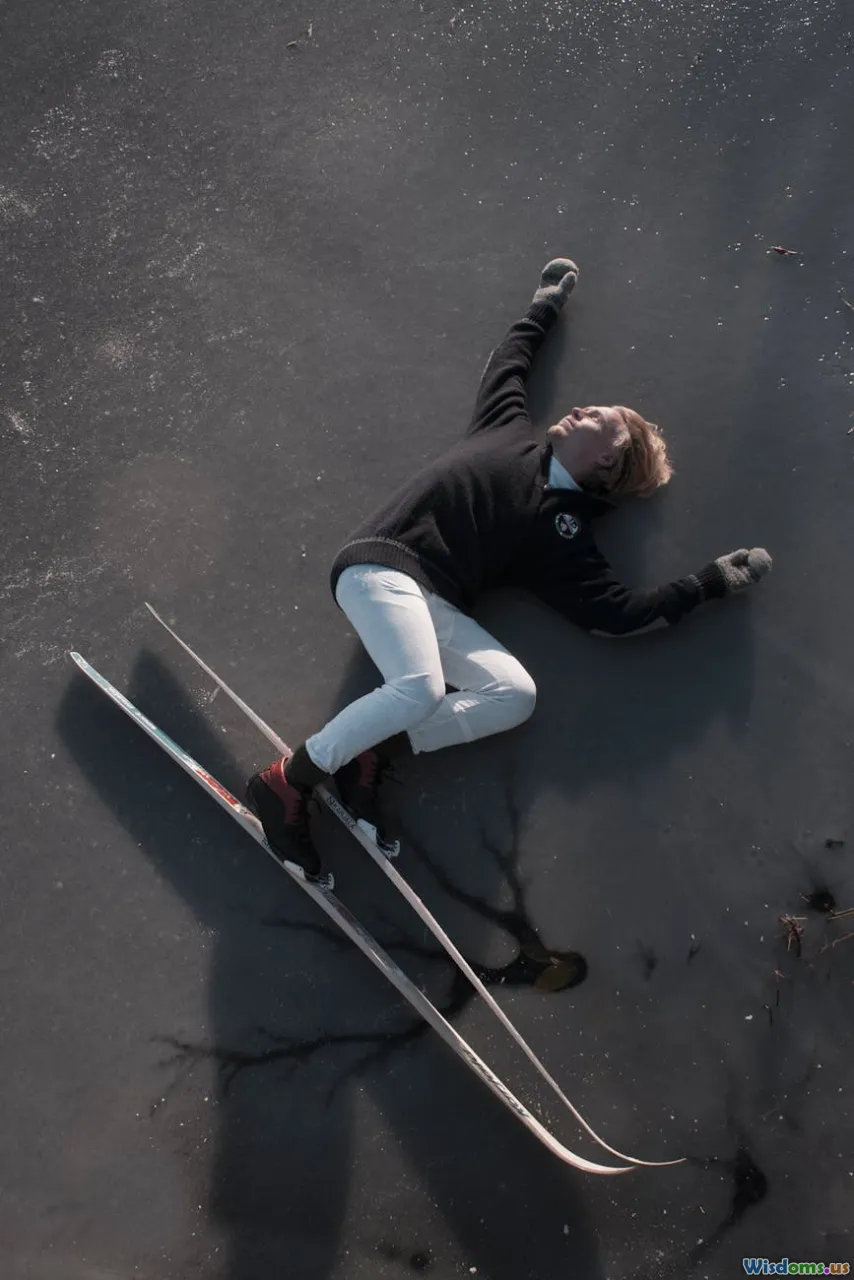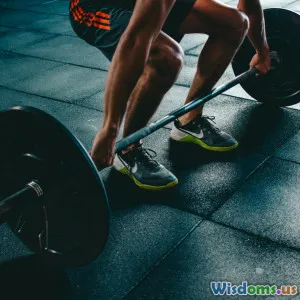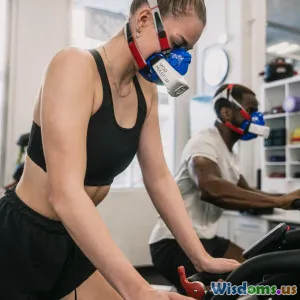
Comparing Ice Baths and Compression Gear for Post Workout Recovery
11 min read Explore the benefits and science behind ice baths versus compression gear for optimal post-workout recovery. (0 Reviews)
Comparing Ice Baths and Compression Gear for Post-Workout Recovery
Recovery is the unsung hero of athletic performance. While tough workouts push our bodies to the limit, the post-workout recovery phase ultimately determines how much fitness and strength gains we reap. Among a growing number of recovery methods, two popular yet contrasting modalities have garnered particular attention: cold water immersion (commonly known as ice baths) and compression gear. But which is more effective? Or are they complementary tools? Let's dive deep into the science and practicalities behind these recovery staples.
Understanding Post-Workout Recovery
After strenuous exercise, skeletal muscles suffer microtrauma, inflammation, and metabolic stress leading to delayed onset muscle soreness (DOMS) and fatigue. Effective recovery strategies aim to accelerate repair, reduce inflammation, restore muscle function, and reduce perceived soreness — all critical for training consistency and performance enhancement.
Evolution of Recovery Techniques
Traditional recovery included rest and stretching, but technology and research introduced modalities like cryotherapy, compression treatment, massage guns, and purposeful nutritional strategies. Today, elite athletes, fitness enthusiasts, and researchers continuously seek evidence-based interventions that improve recovery without compromising training adaptations.
Ice Baths: The Cold Treatment
What Are Ice Baths?
An ice bath involves submerging the body or limbs in cold water (typically 10–15°C) for 5–15 minutes. Used extensively in pro sports, it's designed to reduce tissue temperature swiftly to mitigate inflammation.
Scientific Basis
Cold exposure induces vasoconstriction, reducing blood flow to muscle tissues. This process helps limit inflammation and swelling caused by microtrauma during exercise.
- Inflammation Reduction: Research suggests that lowering tissue temperature decreases metabolic activity and inflammatory responses that prolong soreness and muscle damage (Bleakley et al., 2012).
- Pain Relief: Endorphin release and reduced nerve conduction velocity contribute to perceived analgesic effects.
Performance and Recovery Outcomes
Several studies indicate that ice baths can help reduce DOMS and improve perceived recovery in the short term. However, the evidence on long-term muscle strength recovery and hypertrophy is mixed. Some scientists warn against routine cold exposure immediately post-training as it might blunt inflammatory signaling necessary for muscle growth (Roberts et al., 2015).
Practical Considerations
- Common protocols suggest sessions lasting 10–15 minutes in water cooled with ice.
- Athletes typically immerse lower limbs after running or cycling, or whole bodies after intense full-body workouts.
- Not suitable for those sensitive to cold or with circulatory issues.
Real-World Insight
Olympic athletes like swimmers and marathon runners routinely incorporate ice baths, often performed in specialized recovery rooms. For instance, Usain Bolt famously attributed part of his legendary recovery speed to ice baths, combined with massage and nutrition.
Compression Gear: The Pressurized Solution
What is Compression Gear?
Compression garments include sleeves, socks, tights, and full outfits that tightly wrap muscles with graduated pressure. The tightness is designed to enhance circulation and support muscle tissue.
Mechanism of Action
Compression increases venous return, which helps more efficient removal of metabolic byproducts like lactic acid and supports oxygenated blood delivery.
- Vascular Benefits: Improved blood flow may hasten the clearance of inflammatory compounds.
- Muscle Stabilization: Compression provides proprioceptive feedback reducing oscillation of muscle fibers during movement, potentially preventing additional muscle fatigue or damage.
Effectiveness Supported by Research
- A 2013 meta-analysis (Hill et al., 2014) showed compression garments can moderately reduce muscle soreness and perceived fatigue post-exercise.
- Some evidence also suggests enhanced muscle strength recovery and reduced swelling when compression is worn immediately following or during post-exercise periods.
Advantages in Practice
- Compression gear is easy to use, non-invasive, and portable.
- Can be worn during cooldown or even during athletic activity for performance enhancements.
- Suitable for a wide range of sports and fitness levels.
Real-World Application
Endurance athletes, such as Ironman triathletes, commonly wear compression socks and calf sleeves during long events and recovery phases. Professional cycling teams integrate compression garments as part of their recovery protocols to support quicker turnaround between stages.
Head-to-Head: Ice Baths vs Compression Gear
| Factor | Ice Baths | Compression Gear |
|---|---|---|
| Mechanism | Vasoconstriction, inflammation reduction | Improved circulation, muscle stabilization |
| Pain Relief | Strong short-term analgesia | Moderate reduction in soreness |
| Ease of Use | Requires setup, cold tolerance | Easily donned, portable |
| Impact on Adaptation | Potentially blunts hypertrophy signaling if used excessively | Generally no negative effect on muscle growth |
| Best Use Case | After very intense training or competition when acute inflammation needs managing | Daily or post-exercise use, especially after moderate training loads |
Combining Both Methods
Many athletes and teams integrate ice baths and compression gear sequentially for a robust recovery routine. For example, immersing in an ice bath immediately post-exercise to reduce acute inflammation followed by wearing compression for several hours to maintain enhanced circulation and reduce swelling.
Practical Recommendations
- Ice Baths: Use sparingly, particularly after extreme exertion or injury. Limit duration to avoid excessive cold exposure side effects.
- Compression Gear: Use routinely post-exercise and perhaps during longer endurance sessions. Choose properly fitted garments to maximize benefits.
Conclusion: What Should You Choose?
Both ice baths and compression gear offer distinct physiological advantages for post-workout recovery, but they are not mutually exclusive. Ice baths provide powerful acute anti-inflammatory effects best suited to high-intensity, eccentric-heavy workouts or competition days. Compression garments offer a convenient, consistently effective method to enhance circulation, reduce soreness, and support ongoing recovery without risk of blunted muscle adaptation.
Ultimately, the best approach depends on your sport, training intensity, personal tolerance, and recovery goals. Experimenting with both methods — possibly under professional guidance — will allow you to tailor a recovery protocol that minimizes downtime and maximizes gains.
As sports science advances, our understanding of nuanced recovery approaches will only improve, so staying updated with credible research is equally vital to harness these techniques optimally.
References
- Bleakley, C. M., et al. (2012). "The use of ice in the treatment of acute soft-tissue injury: a systematic review of randomized controlled trials." Am J Sports Med.
- Roberts, L. A., et al. (2015). "Post-exercise cold water immersion attenuates acute anabolic signaling..." J Physiol.
- Hill, J., et al. (2014). "Compression garments and recovery from exercise: a meta-analysis." Int J Sports Physiol Perform.
Rate the Post
User Reviews
Popular Posts




















